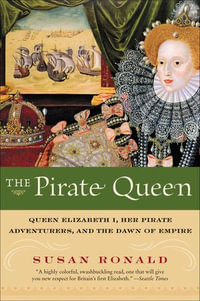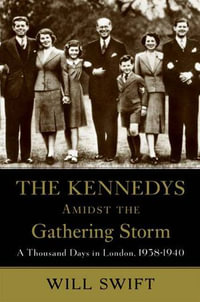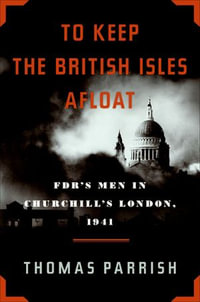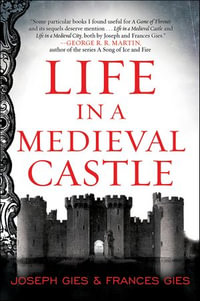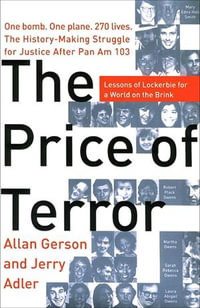
eBOOK
At a Glance
eBook
RRP $27.49
$21.99
20%OFF
OR
Free with Kobo Plus Read
Start Free Trial *- Subscribe and read all you want.
- $13.99 a month after free trial. Cancel Anytime. Learn more.
Instant Digital Delivery to your Booktopia Reader App
Read on
Android
eReader
Desktop
IOS
Windows
Two years after landing on English soil in 1066, William of Normandy erected a strategic castle at Nottingham, thereby creating an enduring military nexus through to the modern era.
On 22 August 1642, in his endeavours to quash Parliamentarian insurrection in the Midlands, King Charles raised his standard over Nottingham Castle, a rallying call to all Royalists to support their monarch. Loyalty to the Crown was, however, divided, and before long Parliamentarian forces garrisoned the castle.
Late in the eighteenth century, a town troop of Yeomanry was raised in Nottingham, the foundation of the future South Notts Yeomanry. The yeomanry assisted regular troops by helping restore peace during the so-called Bread Riots of 1795, at a time when many of the town s men had been committed to military duty during the French Revolutionary Wars. Five troops of the town s yeomanry were again called up for service during the civil unrest of the Luddite Riots of 1811 18. This pattern of service continued over several decades.
Evolving into a regiment, the yeomanry were repeatedly deployed against civil dissenters the Nottingham Riot, and the Reform Bill and Chartist Riots.After seeing combat during the Peninsula Wars in 1815, in the latter half of the 1800s, the 59th (2nd Nottinghamshire) Regiment of Foot formed part of a British invasion force into Afghanistan from India, to curb Russian interventionism in this remote and desolate region.The outbreak of war in distant South Africa in 1899 placed enormous strain on Britain s military capability.
From Nottingham and other county towns, regiments of yeomanry, Hussars and Sherwood Rangers were dispatched to the hostile environment of the African veld. Nottingham s sons then answered a call to arms in their thousands, only to also perish in their thousands on the Godforsaken soils of France and Flanders during the holocaust that was the Great War. Through the Second World War to the present, Nottingham s military units underwent successive phases of metamorphosis from infantry to anti-aircraft and searchlight formations, followed by the relatively recent absorption into a regional entity: the Mercian Regiment. Today, Nottingham's castle and surrounds bear the symbols of a rich and diverse military legacy symbols of remembrance, of tribute, and of a tableau of military pride from ancient times.
About the Author
Gerry van Tonder was born in Zimbabwe and came to Britain in 1999. He is a full-time historian and a published author. Specializing in military history, Gerry has authored Rhodesian Combined Forces Roll of Honour, 1966 1981; Book of Remembrance: Rhodesia Native Regiment and Rhodesian African Rifles; North of the Red Line (South African Defence Forces border war), and the co-authored definitive Rhodesia Regiment, 1899 1981, a copy of which he presented to the regiment's former colonel-in-chief, Her Majesty the Queen. Gerry has also written on British local history, including Derby in 50 Buildings, Chesterfield s Military Heritage and Mansfield Through Time. He recently started with a series of Cold War titles and Echoes of the Coventry Blitz.
On 22 August 1642, in his endeavours to quash Parliamentarian insurrection in the Midlands, King Charles raised his standard over Nottingham Castle, a rallying call to all Royalists to support their monarch. Loyalty to the Crown was, however, divided, and before long Parliamentarian forces garrisoned the castle.
Late in the eighteenth century, a town troop of Yeomanry was raised in Nottingham, the foundation of the future South Notts Yeomanry. The yeomanry assisted regular troops by helping restore peace during the so-called Bread Riots of 1795, at a time when many of the town s men had been committed to military duty during the French Revolutionary Wars. Five troops of the town s yeomanry were again called up for service during the civil unrest of the Luddite Riots of 1811 18. This pattern of service continued over several decades.
Evolving into a regiment, the yeomanry were repeatedly deployed against civil dissenters the Nottingham Riot, and the Reform Bill and Chartist Riots.After seeing combat during the Peninsula Wars in 1815, in the latter half of the 1800s, the 59th (2nd Nottinghamshire) Regiment of Foot formed part of a British invasion force into Afghanistan from India, to curb Russian interventionism in this remote and desolate region.The outbreak of war in distant South Africa in 1899 placed enormous strain on Britain s military capability.
From Nottingham and other county towns, regiments of yeomanry, Hussars and Sherwood Rangers were dispatched to the hostile environment of the African veld. Nottingham s sons then answered a call to arms in their thousands, only to also perish in their thousands on the Godforsaken soils of France and Flanders during the holocaust that was the Great War. Through the Second World War to the present, Nottingham s military units underwent successive phases of metamorphosis from infantry to anti-aircraft and searchlight formations, followed by the relatively recent absorption into a regional entity: the Mercian Regiment. Today, Nottingham's castle and surrounds bear the symbols of a rich and diverse military legacy symbols of remembrance, of tribute, and of a tableau of military pride from ancient times.
About the Author
Gerry van Tonder was born in Zimbabwe and came to Britain in 1999. He is a full-time historian and a published author. Specializing in military history, Gerry has authored Rhodesian Combined Forces Roll of Honour, 1966 1981; Book of Remembrance: Rhodesia Native Regiment and Rhodesian African Rifles; North of the Red Line (South African Defence Forces border war), and the co-authored definitive Rhodesia Regiment, 1899 1981, a copy of which he presented to the regiment's former colonel-in-chief, Her Majesty the Queen. Gerry has also written on British local history, including Derby in 50 Buildings, Chesterfield s Military Heritage and Mansfield Through Time. He recently started with a series of Cold War titles and Echoes of the Coventry Blitz.
Read on
Android
eReader
Desktop
IOS
Windows
ISBN: 9781526707604
ISBN-10: 1526707608
Series: Military Legacy
Published: 31st January 2020
Format: ePUB
Language: English
Number of Pages: 128
Publisher: Pen & Sword Books
Edition Number: 1
